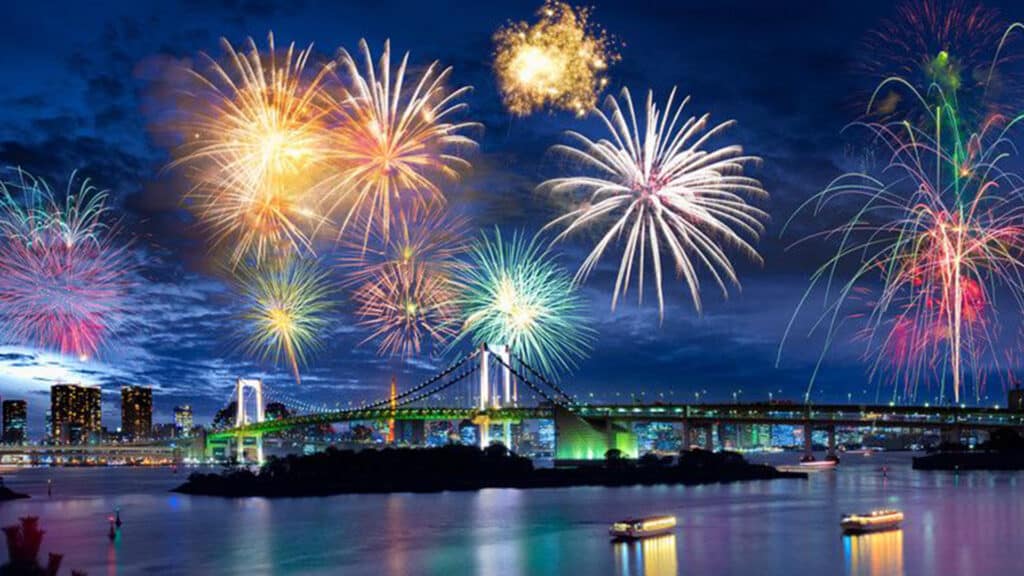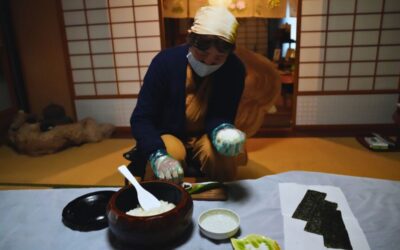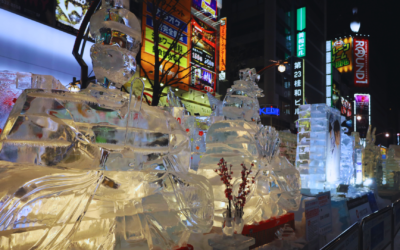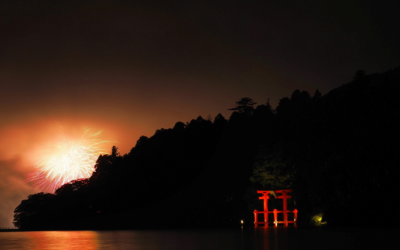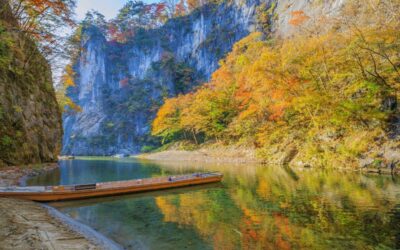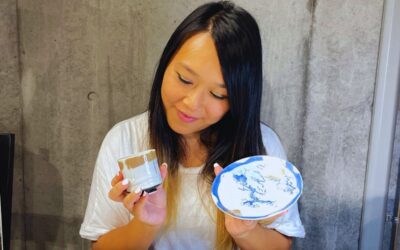When people think of visiting Japan, spring with its cherry blossoms or autumn with its vibrant foliage often come to mind. However, summer in Japan is an underrated season that offers its own unique and exciting experiences. From lively festivals and fireworks displays to serene beach getaways and refreshing mountain hikes, it is a time of celebration and exploration that shouldn’t be overlooked.
Summer travel in Japan might not give you a chance to see the iconic sakura of spring or the colourful leaves of autumn, but it more than makes up for it with its festive atmosphere and natural beauty. The warm weather and longer days provide the perfect backdrop for outdoor activities and cultural events. Whether you’re exploring the busy streets of Tokyo, relaxing on the beaches of Okinawa, or hiking in the Japanese Alps, summer in Japan offers something for every type of traveller.
To help you plan for your Japan trip, we’ve put together the ultimate travel tips for summer in Japan. This guide covers everything from the best times to visit, what to pack, and how to stay comfortable in the heat, to enjoying local festivals and exploring Japan’s natural wonders.
Planning a Summer Trip to Japan?
If you really want to ensure that your summer trip in Japan is stress-free and you get to make the most of your stay, consider taking a look at our expert travel planning services. We can tailor your itinerary to your interests and needs, making your summer adventure in Japan truly unforgettable.
Best Time to Visit Japan in Summer
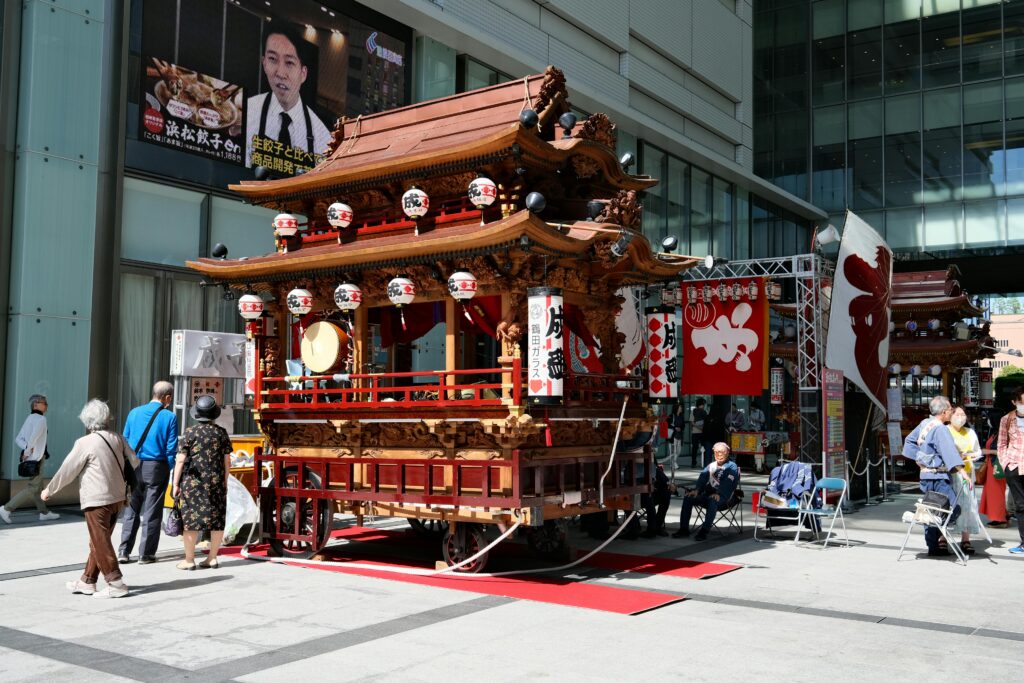
Summer in Japan usually lasts from June to August. While the weather can be hot and humid, this period is filled with exciting festivals, beautiful fireworks, and amazing natural sights.
If you want to come at the best time to experience summer in Japan, consider visiting in late July and early August. This is when many famous festivals, like Gion Matsuri in Kyoto and Nebuta Matsuri in Aomori, take place. Also, the end of June to mid-July is the end of the rainy season, making late summer a better time for outdoor activities.
Packing Essentials for Summer in Japan

Preparing for summer in Japan needs careful packing. The weather can vary a lot depending on where you are, so pack wisely.
Light and Breathable Clothing
Japan’s summer can be very hot and humid, with temperatures often over 30°C (86°F). Pack light, breathable clothing made of natural fabrics like cotton and linen to stay cool. Don’t forget a hat, sunglasses, and plenty of sunscreen to protect yourself from the sun.
Rain Gear
The rainy season (tsuyu) lasts from early June to mid-July. Even if you visit Japan after the rainy season, it’s smart to pack a small umbrella or a lightweight raincoat. Sudden showers can happen, and being prepared can save you from getting wet.
Comfortable Footwear
Whether you’re exploring busy city streets or hiking in the countryside, comfortable shoes are a must. Choose breathable trainers or sandals with good support. If you plan on visiting temples and shrines, remember that you’ll often need to take off your shoes, so slip-on styles can be very handy.
Enjoying Japan’s Summer Festivals
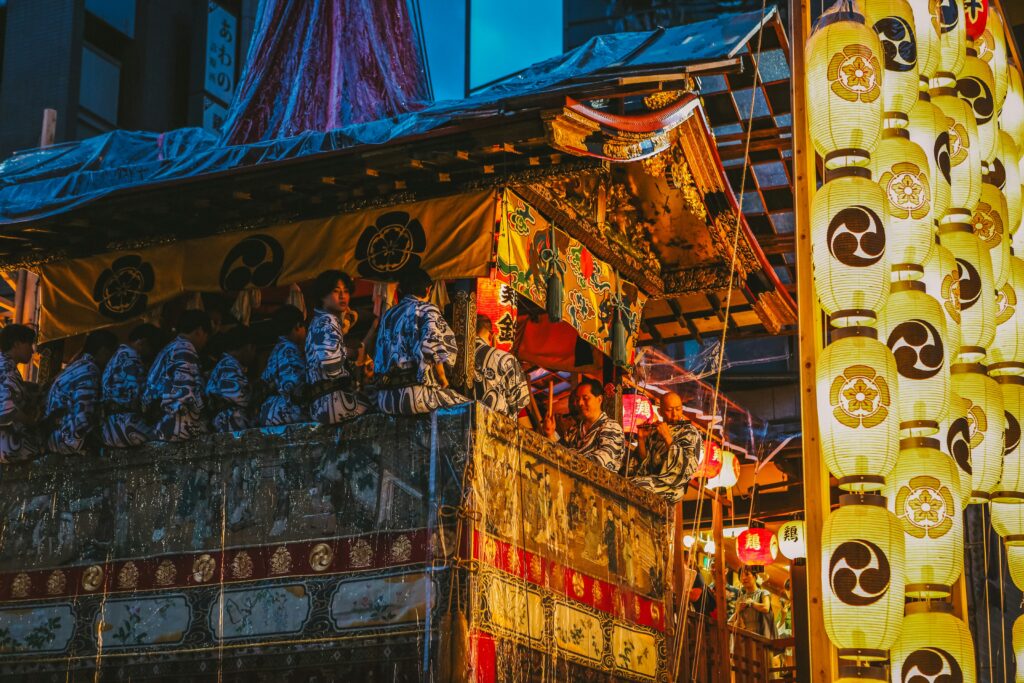
One of the best parts of summer in Japan is the many festivals (matsuri) that take place across the country. These festivals offer a glimpse into Japan’s rich culture and traditions.
Gion Matsuri (Kyoto)
Gion Matsuri, held in Kyoto, is one of Japan’s most famous festivals, with a history dating back over 1,000 years. Taking place throughout July, this festival is a month-long celebration featuring grand processions, traditional music, and stunning floats known as yamaboko. These elaborately decorated floats are paraded through the streets of Kyoto, creating a spectacular sight.
The highlight of Gion Matsuri is the Yamaboko Junko, held on July 17th and 24th, where you can witness the majestic floats being pulled through the city. Each float represents a different historic or mythological theme and is adorned with intricate tapestries and carvings.
In the evenings leading up to the main parades, known as Yoiyama (July 14th-16th and 21st-23rd), the streets are closed to traffic and transformed into pedestrian zones filled with street food stalls, traditional games, and festive activities. This is a great opportunity to immerse yourself in the local culture, try traditional Japanese foods, and enjoy the lively atmosphere.
Nebuta Matsuri (Aomori)
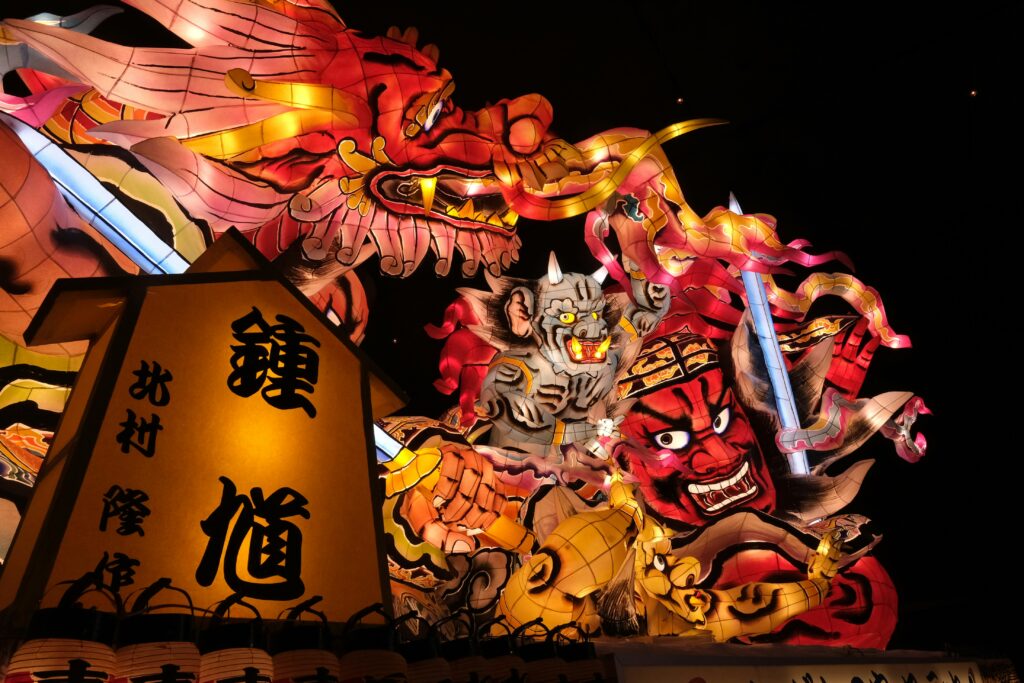
Aomori’s Nebuta Matsuri, held from August 2nd to 7th, is known for its enormous illuminated floats, or nebuta, which depict warriors, gods, and mythical creatures from Japanese folklore. These floats are handcrafted from washi paper and beautifully lit from within, creating a stunning visual spectacle as they are paraded through the streets at night.
The festival also includes lively taiko drumming, traditional music, and spirited haneto dancing. Visitors are encouraged to join in the haneto dance, and costumes can be rented on-site, making it an interactive and memorable experience. The Nebuta Matsuri concludes with a breathtaking fireworks display over Aomori Bay on the final evening, creating an unforgettable end to the festivities.
Tanabata Matsuri (Various Locations)
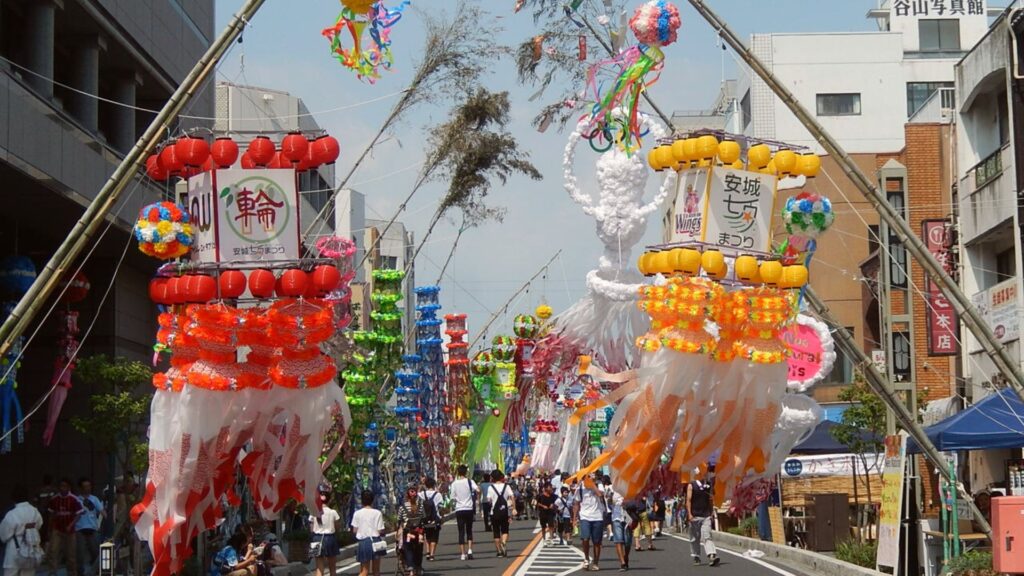
Tanabata, or the Star Festival, is celebrated in various locations throughout Japan, typically on July 7th or August 7th, depending on the region. The festival is based on the legend of Orihime and Hikoboshi, two deities represented by the stars Vega and Altair, who are allowed to meet only once a year on this date.
In cities like Sendai and Hiratsuka, the Tanabata Matsuri is a major event, featuring streets adorned with colourful streamers, paper lanterns, and intricate decorations. These two cities host some of the most notable and grandest Tanabata celebrations in Japan:
- Sendai Tanabata Matsuri: Held from August 6th to 8th, this festival is famous for its grand bamboo decorations covered in beautifully crafted paper ornaments. The decorations in Sendai are particularly elaborate, often featuring intricate designs that take months to prepare. The festival includes parades, traditional music, and dance performances. The city centre is filled with stalls offering local foods, crafts, and games, creating a vibrant and festive atmosphere.
- Hiratsuka Tanabata Matsuri: Taking place in early July, Hiratsuka’s celebration is one of the largest Tanabata festivals in the Kanto region. The festival includes parades, traditional performances, and numerous stalls selling local foods and crafts. The streets are beautifully decorated with colourful streamers and elaborate ornaments, similar to those seen in Sendai, providing a visually stunning experience for visitors.
During Tanabata, people write their wishes on small pieces of paper called tanzaku and hang them on bamboo branches, hoping for their dreams to come true. The festive atmosphere, combined with the enchanting decorations, makes Tanabata a magical experience for visitors.
Exploring Japan’s Natural Beauty
Summer in Japan is a great time to see the country’s natural beauty, from lush mountains to pristine beaches.
Hiking in the Japanese Alps

The Japanese Alps offer some of the best hiking opportunities in the country. Popular routes include the Tateyama Kurobe Alpine Route and the Kamikochi Valley. These areas provide stunning views, cool mountain air, and a chance to escape the summer heat.
Tateyama Kurobe Alpine Route
This route is famous for its dramatic landscapes, including the iconic snow corridor (Yuki no Otani) which is open from mid-April to late June. The route spans from Toyama City in Toyama Prefecture to Omachi Town in Nagano Prefecture and includes multiple modes of transport such as cable cars, trolley buses, and ropeways. The journey offers spectacular views of Mt. Tateyama, Kurobe Dam, and Murodo Plateau. While the main attractions are accessible via transport, the area also offers several hiking trails for all levels of hikers.
- Murodo Plateau: At an elevation of 2,450 meters, Murodo Plateau is a great starting point for various hikes, including an easy walk around Mikurigaike Pond or a more challenging trek up to Mt. Tateyama. The trails here offer stunning panoramic views of the surrounding peaks and valleys. Hiking in this area allows you to experience the natural beauty up close, with alpine flora and, sometimes, encounters with local wildlife.
For more information and to plan your visit, check the Tateyama Kurobe Alpine Route official website.
Kamikochi Valley
Located in the Northern Japanese Alps of Nagano Prefecture, Kamikochi is a picturesque mountain valley that offers various hiking trails suitable for all levels. The area is known for its stunning views of the Azusa River, Mt. Hotaka, and Mt. Yakedake. Popular trails include the easy walk along the river to Myojin Bridge and the more challenging hike up to the Dakesawa Valley. Kamikochi is accessible from Matsumoto via bus and is open from mid-April to mid-November. Visit the Kamikochi Official Website for detailed information and hiking maps.
Beach Destinations
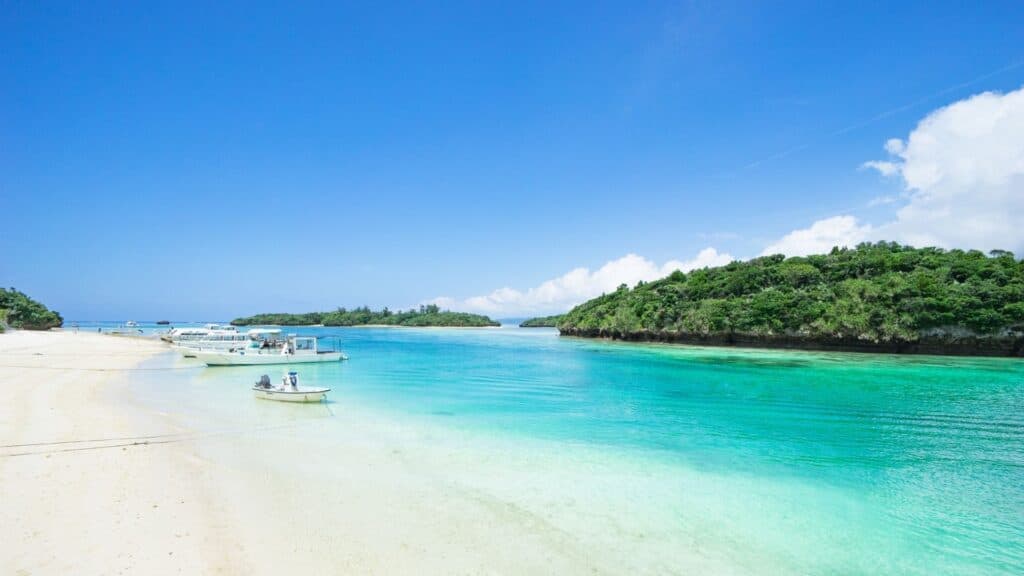
If you’re looking for a seaside escape, Japan has plenty of beautiful beaches. Okinawa, with its clear waters and white sandy beaches, is a tropical paradise. For those on the mainland, consider heading to Kamakura or Enoshima for a beach day trip from Tokyo.
Okinawa
Known for its stunning beaches and crystal-clear waters, Okinawa is perfect for swimming, snorkelling, and diving. Popular beaches include Emerald Beach in the Ocean Expo Park, Furuzamami Beach on Zamami Island, and Kondoi Beach on Taketomi Island. Okinawa also offers a rich cultural heritage with historical sites like Shurijo Castle and the Okinawa Churaumi Aquarium. For travel information and accommodation options, visit the Okinawa Travel Guide.
Kamakura
Located just an hour south of Tokyo, Kamakura is famous for its historic temples and beautiful beaches. Yuigahama Beach and Zaimokuza Beach are popular spots for swimming, surfing, and sunbathing. After a day at the beach, you can explore the Great Buddha of Kamakura or take a scenic hike to the Hase-dera Temple. Check out Kamakura’s Official Tourism Website for more details.
Enoshima
A small island connected to the mainland by a bridge, Enoshima offers lovely beaches, shrines, and panoramic views from its lighthouse observation tower. Enoshima Beach is popular for its lively atmosphere, water sports, and summer beach huts. The island also features the Enoshima Sea Candle, Samuel Cocking Garden, and the Enoshima Aquarium. For more information, visit the Enoshima-Kamakura Official Guide.
Chiba Beaches
Chiba Prefecture, located just east of Tokyo, boasts several beautiful beaches that are perfect for a day trip. Some popular spots include Kujukuri Beach, a long sandy beach ideal for surfing and beach activities, and Onjuku Beach, known for its white sands and calm waters. Chiba’s beaches are less crowded compared to those in Kanagawa, offering a more relaxed atmosphere. For more details on visiting Chiba’s beaches, visit the Chiba Prefecture Tourism Website.
For more summer destinations that are accessible from the capital, check out our list of the Top 8 Beaches Near Tokyo.
Lavender Fields in Furano
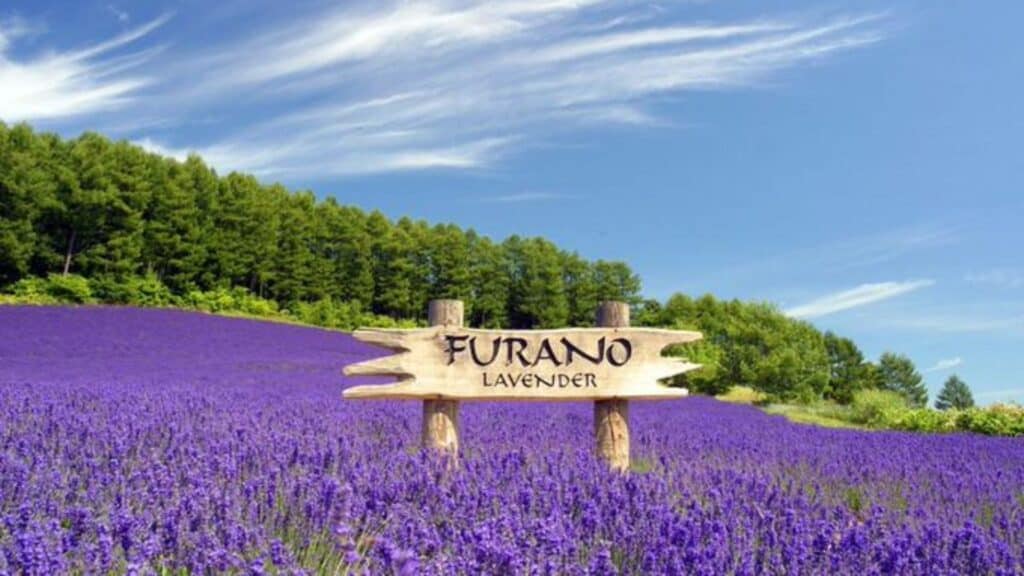
In Hokkaido, the town of Furano is famous for its vast lavender fields, which reach their peak bloom in July. The vibrant purple landscapes, set against a backdrop of rolling hills and mountains, make for stunning photo opportunities.
Farm Tomita
One of the most famous lavender farms in Furano, Farm Tomita offers spectacular views of lavender fields with the Tokachi Mountain Range in the background. Visitors can also enjoy lavender-flavoured soft serve ice cream and various lavender products. The farm is open from late June to early August, with peak bloom typically in mid-July. Learn more at the Farm Tomita Website.
Lavender East
Also perated by Farm Tomita, Lavender East is another expansive lavender field offering a tranquil setting and fewer crowds. The field features an observation deck and a tractor ride that takes visitors through the fields. It’s an excellent spot for photography and enjoying the serene lavender-scented air. For details, visit the Farm Tomita Lavender East Page.
Culinary Delights of Summer in Japan
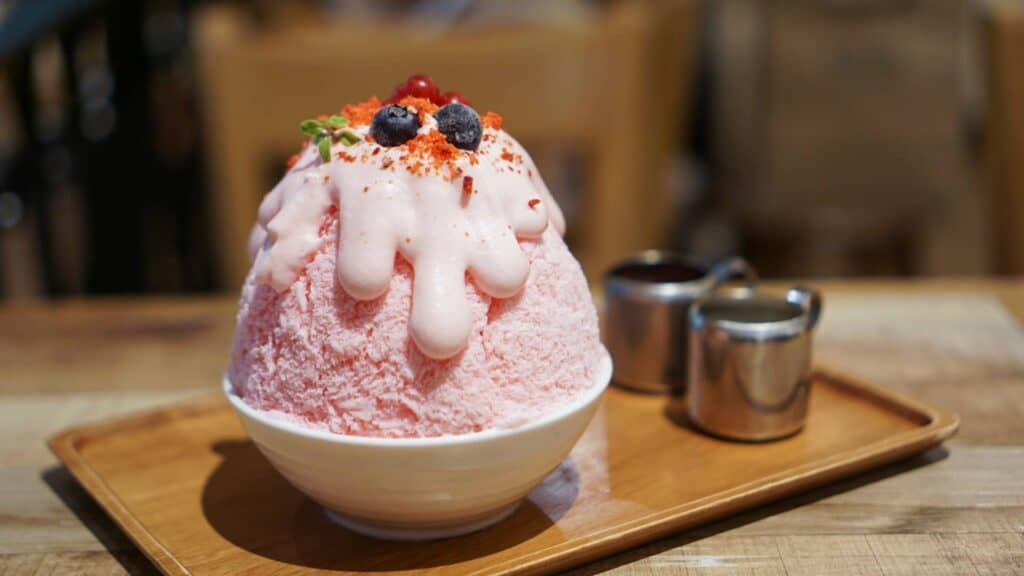
Japanese food is a highlight of any trip, and summer brings its own seasonal specialties. Here are some must-try summer treats and tips for staying comfortable during Japan’s hot and humid summer.
Kakigori (Shaved Ice)
Kakigori, or shaved ice, is a popular summer treat in Japan. This refreshing dessert comes in various flavours, such as matcha, strawberry, and melon, often topped with condensed milk or syrup. It’s a perfect way to cool down on a hot day.
- Where to Try: You can find kakigori at summer festivals, local sweet shops, and even convenience stores. Famous spots include:
- Sebastian in Tokyo’s Shibuya district, known for its innovative and artistic kakigori. Visit their Instagram for updates and menu.
- Funabashiya in Tokyo, offering a variety of delicious kakigori options. We at Flip Japan Guide are a fan of this establishment and have reviewed their yummy treats in this post.
Somen Noodles
Somen are thin, cold noodles usually served with a light dipping sauce. They are a refreshing and light meal, ideal for hot summer days.
- Where to Try: You can find somen noodles in many restaurants and try the fun experience of nagashi somen, where noodles are served flowing down a bamboo slide filled with water. Popular places include:
- Hirobun in Kyoto, known for its picturesque setting by a river. Check their website for more information.
For a quick bite, you can also buy packaged somen noodles and dipping sauces at supermarkets and convenience stores like 7-Eleven, FamilyMart, and Lawson.
Unagi (Grilled Eel)
Unagi, or grilled eel, is a traditional summer dish believed to provide stamina and energy. It is often served as unadon (eel over rice) and is especially popular during the Doyo no Ushi no Hi, the Day of the Ox in midsummer.
- Where to Eat: Popular restaurants for unagi include:
- Nodaiwa in Tokyo, famous for its high-quality eel dishes. Visit their website for reservations and menu.
- Unagi Hayashida in Tokyo is a popular spot known for its excellent unagi. Learn more about it here.
- Hosakaya in Shizuoka, offering delicious and authentic unagi. We give more details about this restaurant here.
You can also find unagi dishes in department store food halls (depachika) and specialty unagi shops across Japan.
Tips for Staying Comfortable in Japan’s Summer Heat
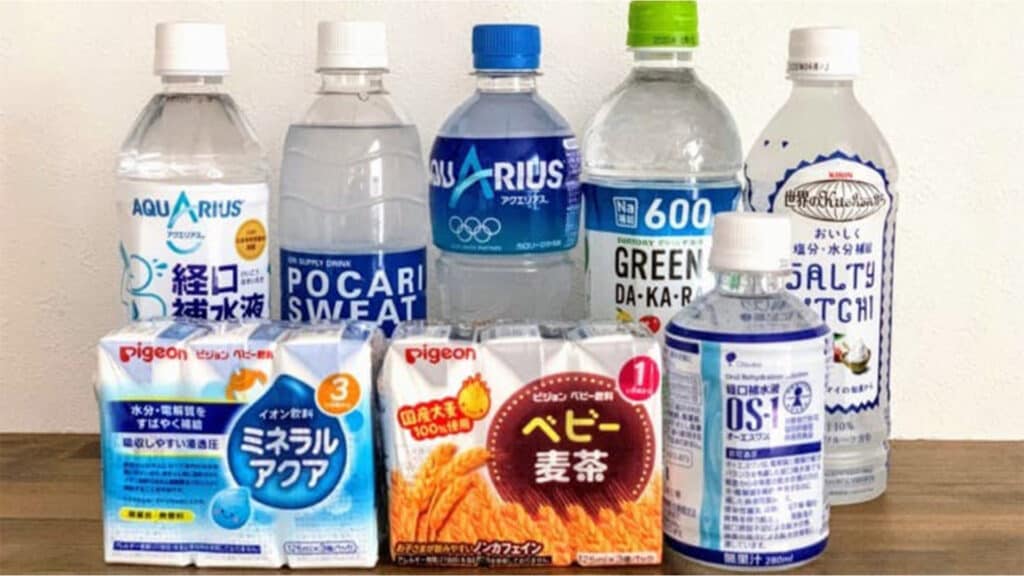
Summer in Japan can be very hot and humid, but with a few tips, you can stay comfortable and enjoy your trip.
Stay Hydrated
Carry a water bottle with you and drink water throughout the day. Convenience stores are plentiful and sell a variety of drinks, including bottled water, sports drinks, and Japanese favourites like Pocari Sweat and Aquarius, which are excellent for replenishing electrolytes. Delicious bottled green tea (oi ocha) and barley tea (mugicha) are also widely available.
Use Cooling Products
Japan offers a range of cooling products, such as portable fans, cooling wipes, and menthol sprays. These items can be very helpful when the temperatures rise and are quite fun for travellers to shop as some of them are unique to Japan. Two products you might want to check out are:
Gatsby Ice-Type Body Paper is a cooling wipe that provides an instant refreshing sensation. Each sheet is infused with menthol, which cools the skin and leaves a pleasant, invigorating scent.
These wipes are perfect for wiping away sweat and grime during hot summer days, making them a handy companion for outdoor activities and sightseeing. They are compact and easy to carry in your bag, and you can find them in convenience stores and pharmacies like Matsumoto Kiyoshi and Welcia.
Shiseido Ag+ Cooling Spray is another must-have for summer in Japan. This spray is designed to keep you cool and fresh by providing a burst of cooling mist. The spray contains menthol and a deodorant component, which helps to control sweat and odour, leaving your skin feeling cool and dry. It’s ideal for use on the go, especially when you need a quick refresh during a busy day of exploring. Like the Gatsby wipes, this cooling spray is widely available in convenience stores and pharmacies across Japan.
Take Advantage of Cool Biz Clothing
Cool Biz clothing is a fashion initiative in Japan aimed at reducing energy consumption by encouraging people to dress more lightly in the summer months. This clothing line includes lightweight, breathable fabrics that are designed to keep you cool even in the heat.
Uniqlo offers a wide range of Cool Biz clothing, including shirts, trousers, and innerwear made from materials that wick away moisture and allow for better air circulation. Items such as their AIRism line are particularly popular for their comfort and effectiveness in hot weather. These clothes are not only practical but also stylish, allowing you to stay comfortable without compromising on fashion.
Take Breaks Indoors

During the hottest parts of the day, take your Japan vacation to air-conditioned spaces like museums, shopping centres, and cafes. Many public places in Japan are well air-conditioned, providing a welcome break from the heat.
Indoor Spots to Visit in Tokyo
- Mori Art Museum: Offers modern art exhibitions in a cool, indoor environment. Located in Roppongi Hills, this museum features contemporary art from both Japanese and international artists. It’s a perfect spot to escape the heat while enjoying thought-provoking exhibitions. Visit their website for details.
- Shibuya Hikarie: A shopping centre with a variety of stores and eateries. Shibuya Hikarie not only offers shopping but also has dining options and an observation deck with panoramic views of Tokyo. It’s a great place to cool down, shop, and dine. Visit their website for more details.
- Starbucks Reserve Roastery: A luxurious coffee experience located in the Nakameguro area. This three-story café offers a wide range of unique coffee and tea beverages in an air-conditioned, beautifully designed space. Visit their website for more information.
Indoor Spots to Visit in Kyoto
- International Manga Museum: A fascinating spot for manga enthusiasts, the museum houses thousands of manga books that you can read in a comfortably air-conditioned environment. It also offers exhibitions on the history and culture of manga. Check their website for more information.
- Kyoto Aquarium: A modern aquarium featuring marine life from Japan and around the world. It’s a great place to cool off and enjoy displays of dolphins, penguins, and a large tank showcasing the aquatic ecosystem of Kyoto. Visit their website for details.
- Nishiki Market: While not fully air-conditioned, this covered market offers some respite from the sun. It’s known as “Kyoto’s Kitchen” and features a variety of food stalls, fresh produce, and traditional snacks. The narrow streets are cooler than being in direct sunlight, and you can enjoy local delicacies as you wander.
Indoor Spots to Visit in Osaka
- Grand Front Osaka: A large shopping complex with numerous shops and dining options. Located near Osaka Station, Grand Front Osaka includes everything from fashion boutiques to electronics stores, as well as a variety of restaurants and cafes. It’s a perfect place to spend a few cool hours. Learn more on their website.
- Osaka Aquarium Kaiyukan: One of the largest aquariums in the world, it features a massive tank with whale sharks, manta rays, and other marine life. The air-conditioned environment makes it a great place to escape the heat and marvel at ocean wonders. Visit their website for more details.
- Umeda Sky Building: A striking skyscraper with a rooftop observatory called the Floating Garden Observatory. The building itself is air-conditioned and has shops, restaurants, and an indoor garden. The observatory offers panoramic views of Osaka. Learn more on their website.
Experiencing Japan’s Unique Summer Culture
Summer in Japan offers unique cultural experiences that you won’t want to miss. Here are two key aspects of Japanese summer culture that are particularly memorable:
Hanabi Taikai (Fireworks Festivals)
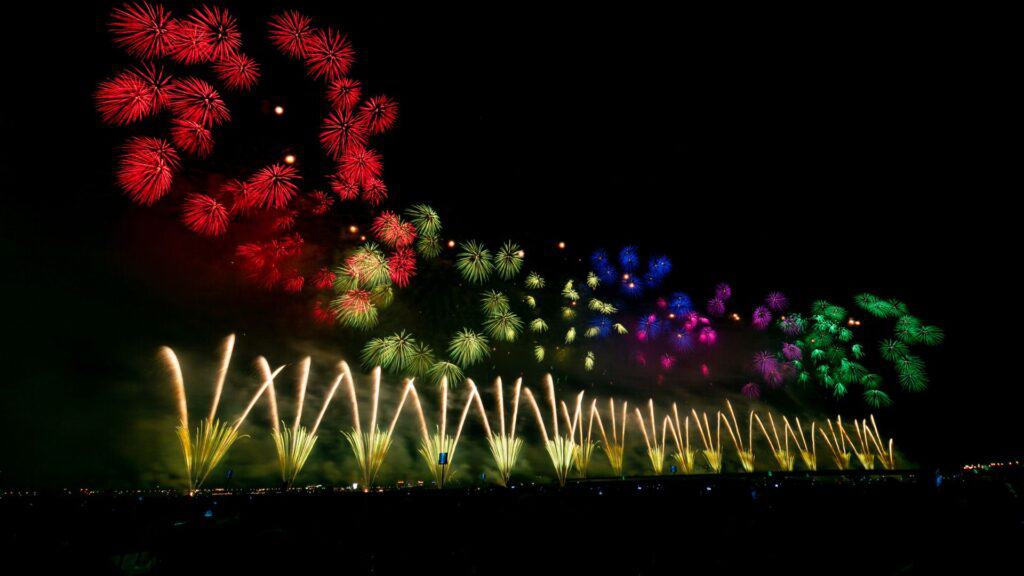
Fireworks festivals are a key part of Japanese summer. Cities across the country host spectacular displays, drawing large crowds and creating vibrant, festive atmospheres. Here are some of the largest and most popular fireworks festivals:
Sumida River Fireworks Festival (Tokyo)
Held on the last Saturday in July, this is one of Tokyo’s oldest and most famous fireworks festivals, dating back to 1733. The event features around 20,000 fireworks and attracts nearly a million spectators. The fireworks are launched from two sites along the Sumida River, providing multiple vantage points for viewers. Arrive early to secure a good viewing spot.
Nagaoka Fireworks Festival (Niigata)
Taking place on August 2nd and 3rd, this festival is one of Japan’s most impressive, with about 20,000 fireworks each night. The festival commemorates the victims of World War II and the 2004 Chūetsu Earthquake. It attracts over a million visitors annually. Highlights include the Phoenix and Star Mine displays.
Tenjin Matsuri Fireworks (Osaka)
Part of the Tenjin Matsuri, one of Japan’s top three festivals, the fireworks display occurs on July 25th. Around 5,000 fireworks are launched over the Okawa River, creating a spectacular scene alongside the illuminated boat procession.
Yukata

Wearing a yukata, a casual summer kimono, is a fun way to immerse yourself in Japanese culture. Yukata are often worn to summer festivals and fireworks events.
A yukata is a lightweight, casual kimono typically made of cotton. It is worn during the summer months and is known for its vibrant patterns and comfortable fit. Unlike the formal kimono, yukata are easier to wear and maintain.
Wearing a yukata involves wrapping the garment around the body and securing it with an obi (belt). The left side should always be wrapped over the right side. Yukata are often paired with geta (traditional wooden sandals) and a small handbag. For those unfamiliar with how to wear a yukata, rental shops often provide dressing assistance.
Yukata can be rented near major tourist spots, summer festivals, and fireworks events. Rental shops in areas like Kyoto’s Gion and Arashiyama districts, Tokyo’s Asakusa, and other major cities offer a wide selection of yukata, complete with accessories and professional dressing assistance.
Make the Most of Your Summer Travel in Japan
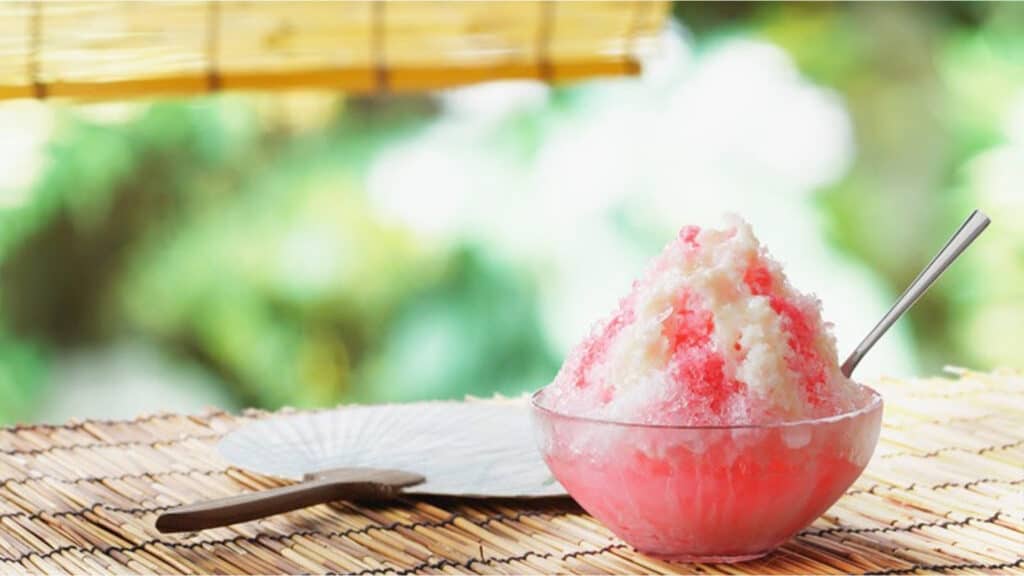
Travelling to Japan in the summer is an extraordinary experience filled with cultural discoveries, stunning natural beauty, and delightful seasonal foods. By following these travel tips for summer in Japan, you’ll be well-prepared to enjoy all that this amazing country has to offer.
From attending vibrant festivals like the Sumida River Fireworks and the Nagaoka Fireworks Festival, to wearing a beautifully patterned yukata as you explore historical streets or relax at a summer event, Japan’s summer culture is both rich and immersive.
So pack your bags, embrace the adventure, and get ready to create unforgettable summer memories in Japan.

